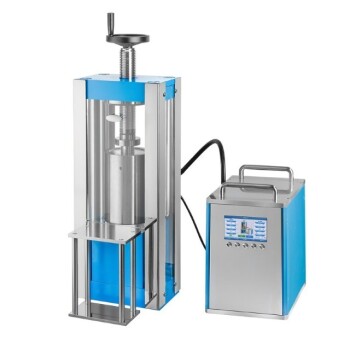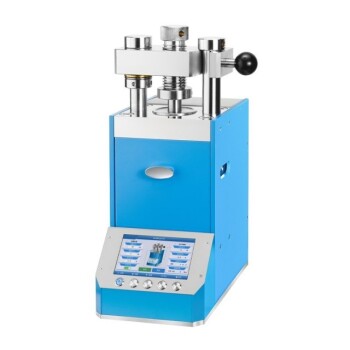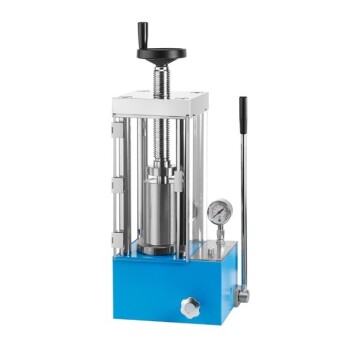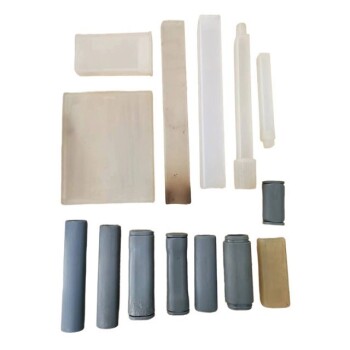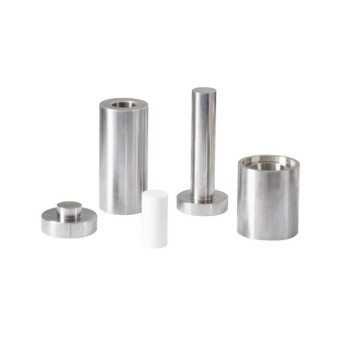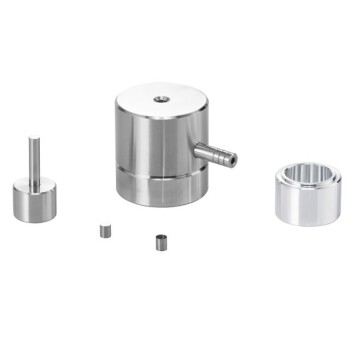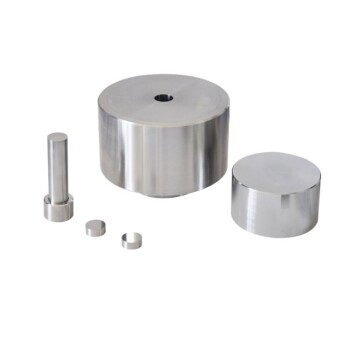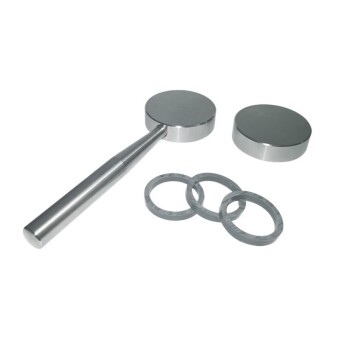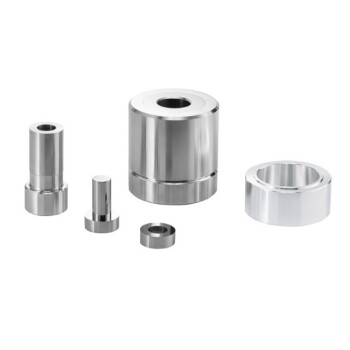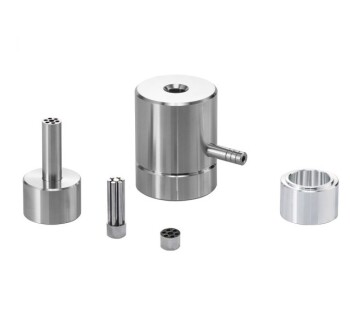In Cold Isostatic Pressing (CIP), Wet Bag technology is a method where powder is placed in a flexible, sealed mold before being submerged into a fluid-filled pressure vessel. This approach is defined by its operational flexibility, allowing for the compaction of multiple parts of various shapes and sizes in a single cycle, though at a slower pace than its alternative, Dry Bag technology.
The core distinction of Wet Bag CIP is its trade-off: it sacrifices the speed and automation of Dry Bag systems to gain exceptional versatility in part size, shape, and production variety. It is the ideal method for prototyping, producing large components, or running low-to-medium volume batches of diverse parts.
The Mechanics of the Wet Bag Process
Understanding the Wet Bag process begins with recognizing that the key actions of filling and sealing happen outside the main equipment.
Step 1: Filling and Sealing the Mold
The raw powder is first loaded into a flexible, elastomeric mold bag. This mold is then hermetically sealed to prevent the pressurizing fluid from contaminating the powder.
Step 2: Submersion in the Pressure Vessel
The sealed mold, now a self-contained unit, is submerged in the pressure fluid (typically oil or water) inside a high-pressure vessel. Multiple molds of different shapes and sizes can often be loaded into the vessel at the same time.
Step 3: Isostatic Pressure Application
The vessel is sealed, and high-volume pumps increase the fluid's pressure. This pressure is transmitted uniformly from all directions onto the surface of the sealed mold, compacting the powder inside into a solid "green" part with a consistent density.
Key Characteristics of Wet Bag CIP
The mechanics of the Wet Bag process directly lead to its defining operational characteristics.
Exceptional Versatility
Because the mold is an independent tool, you can process many different part geometries within a single press cycle. This makes the method ideal for R&D, prototyping, and job shops with diverse production needs.
Suitability for Large Components
Wet Bag presses are available in very large sizes, with vessel diameters reaching up to 2000mm (nearly 80 inches). This capability allows for the isostatic pressing of very large and complex components that would be impossible with other methods.
Slower Cycle Times
The process is inherently manual and slower than its alternative. Including loading, pressurization, and unloading, a full cycle typically takes between 5 and 30 minutes.
Understanding the Trade-offs: Wet Bag vs. Dry Bag
Choosing the right CIP method requires understanding the fundamental differences between Wet and Dry Bag technology.
Speed and Automation
Dry Bag technology is built for speed. The flexible mold is integrated into the pressure vessel, allowing for automated powder filling and rapid cycles, often under one minute. Wet Bag is a more manual, batch-oriented process with significantly longer cycle times.
Production Volume and Variety
Dry Bag is the clear choice for high-volume, automated mass production of a single, repeating part shape. Wet Bag excels at low-to-medium volume production, especially when the part mix is highly varied.
Part Size and Shape Flexibility
Wet Bag offers near-limitless flexibility. As long as the sealed mold fits inside the pressure vessel, it can be pressed. Dry Bag is constrained to the single shape of its built-in mold.
Cleanliness and Tooling
In Dry Bag systems, the pressure fluid is isolated from the powder mold, resulting in a cleaner process. In Wet Bag systems, the tooling (the mold bag) is external and must be handled, and any leak could result in contamination.
Making the Right Choice for Your Application
Your manufacturing goal is the only factor that matters when choosing between these two powerful technologies.
- If your primary focus is part variety and size: Wet Bag technology's flexibility to handle multiple shapes, large components, and prototypes is unmatched.
- If your primary focus is high-volume mass production: Dry Bag technology's speed, automation, and rapid cycle times are necessary for efficient, repeatable manufacturing.
- If your primary focus is research and development: Wet Bag's lower tooling cost and ability to test numerous designs make it the superior choice for R&D labs and pilot projects.
Ultimately, selecting the correct CIP method is about aligning the technology's inherent strengths with your specific production objective.
Summary Table:
| Characteristic | Description |
|---|---|
| Versatility | Handles multiple shapes and sizes in one cycle, ideal for R&D and diverse production. |
| Part Size | Suitable for large components up to 2000mm diameter. |
| Cycle Time | Slower, manual process taking 5-30 minutes per cycle. |
| Automation Level | Low automation, batch-oriented with external mold handling. |
| Best For | Prototyping, low-to-medium volume, and varied part production. |
Ready to enhance your lab's capabilities with versatile pressing solutions? KINTEK specializes in lab press machines, including automatic lab presses, isostatic presses, and heated lab presses, designed to meet your laboratory needs for prototyping, R&D, and diverse part production. Our expertise ensures precise compaction and efficiency for your projects. Contact us today to discuss how our CIP technologies can benefit your specific applications!
Visual Guide
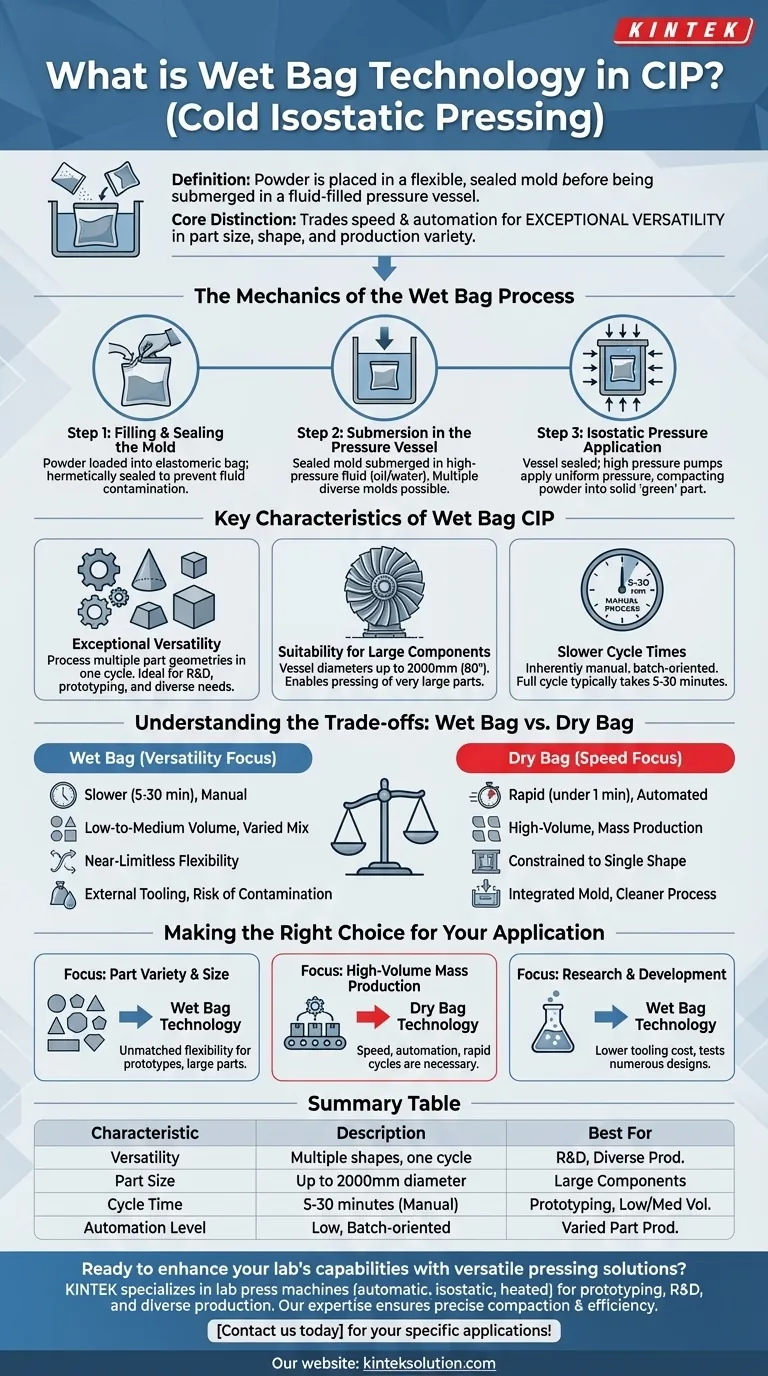
Related Products
- Electric Split Lab Cold Isostatic Pressing CIP Machine
- Automatic Lab Cold Isostatic Pressing CIP Machine
- Manual Cold Isostatic Pressing CIP Machine Pellet Press
- Lab Isostatic Pressing Molds for Isostatic Molding
- Laboratory Hydraulic Press 2T Lab Pellet Press for KBR FTIR
People Also Ask
- What are some specific aerospace applications of isostatic pressing? Enhance Performance and Reliability in Extreme Conditions
- What are the common forming processes in advanced ceramics? Optimize Your Manufacturing for Better Results
- How does CIP improve the mechanical properties of refractory metals? Boost Strength and Durability for High-Temp Applications
- What are the advantages of Cold Isostatic Pressing (CIP) for pellet preparation? Achieve Superior Density and Uniformity
- How does Cold Isostatic Pressing (CIP) compare to Powder Injection Molding (PIM) in terms of shape complexity? Choose the Best Process for Your Parts
